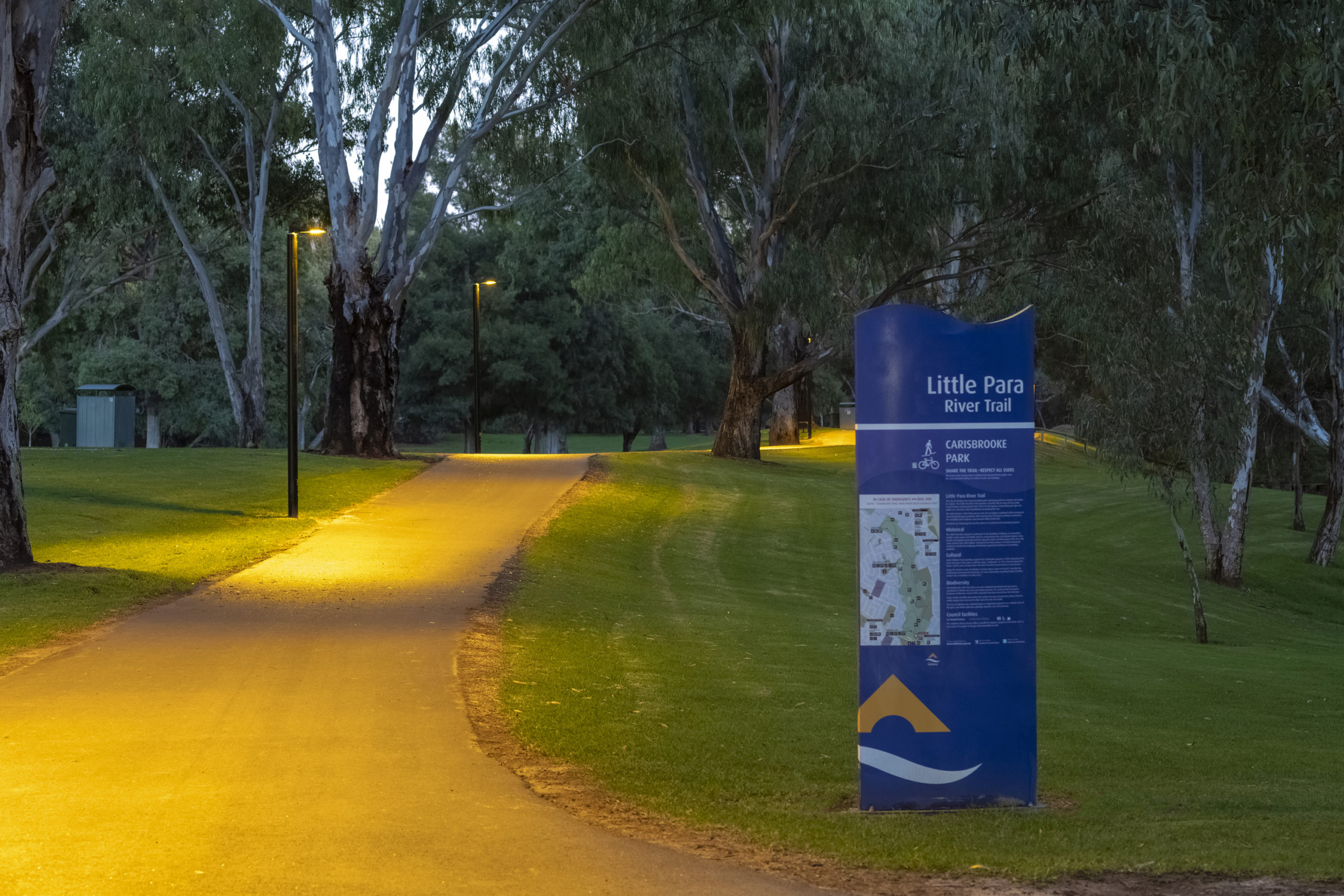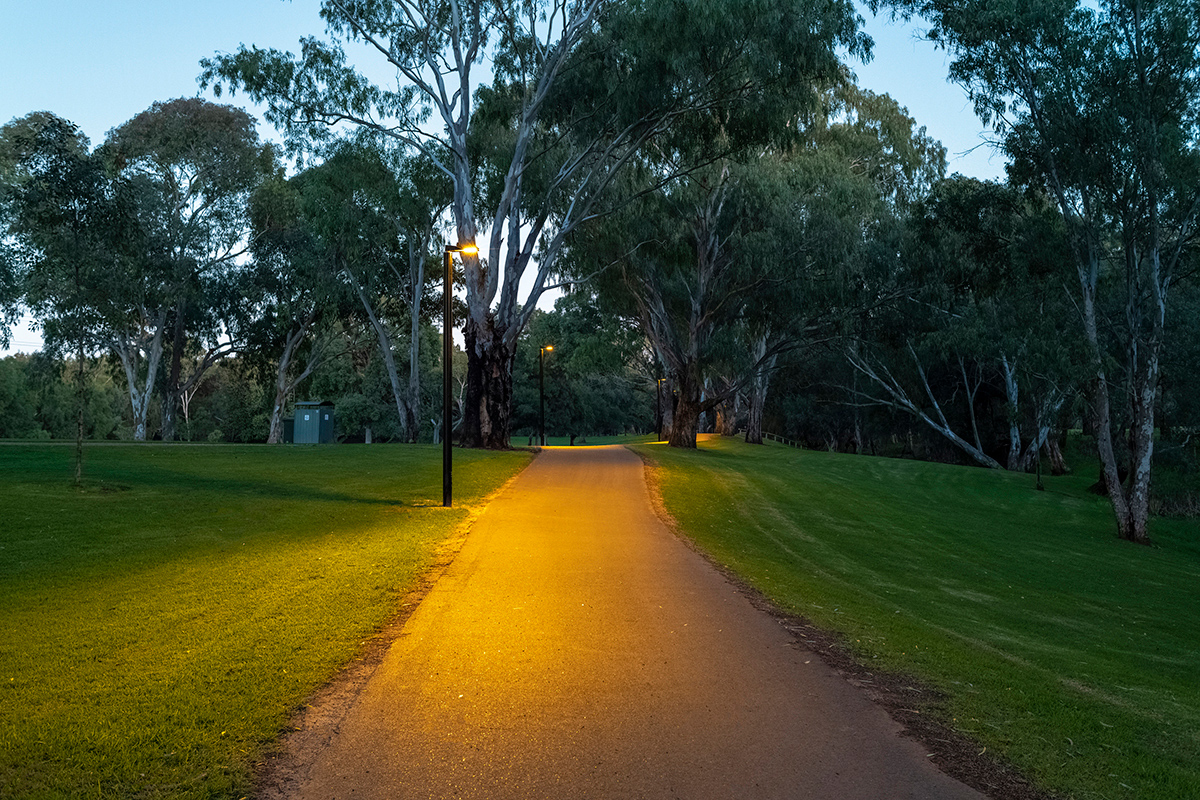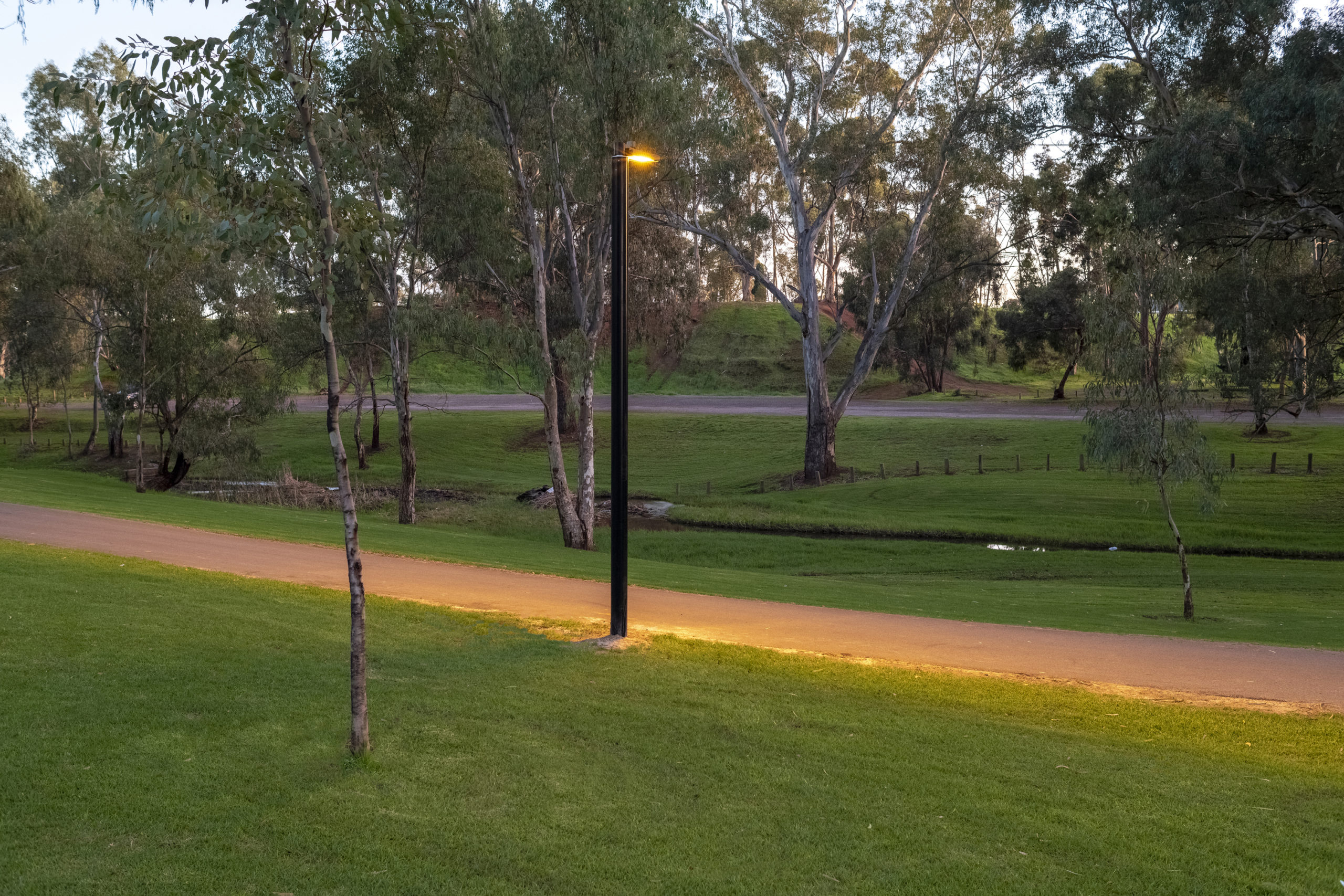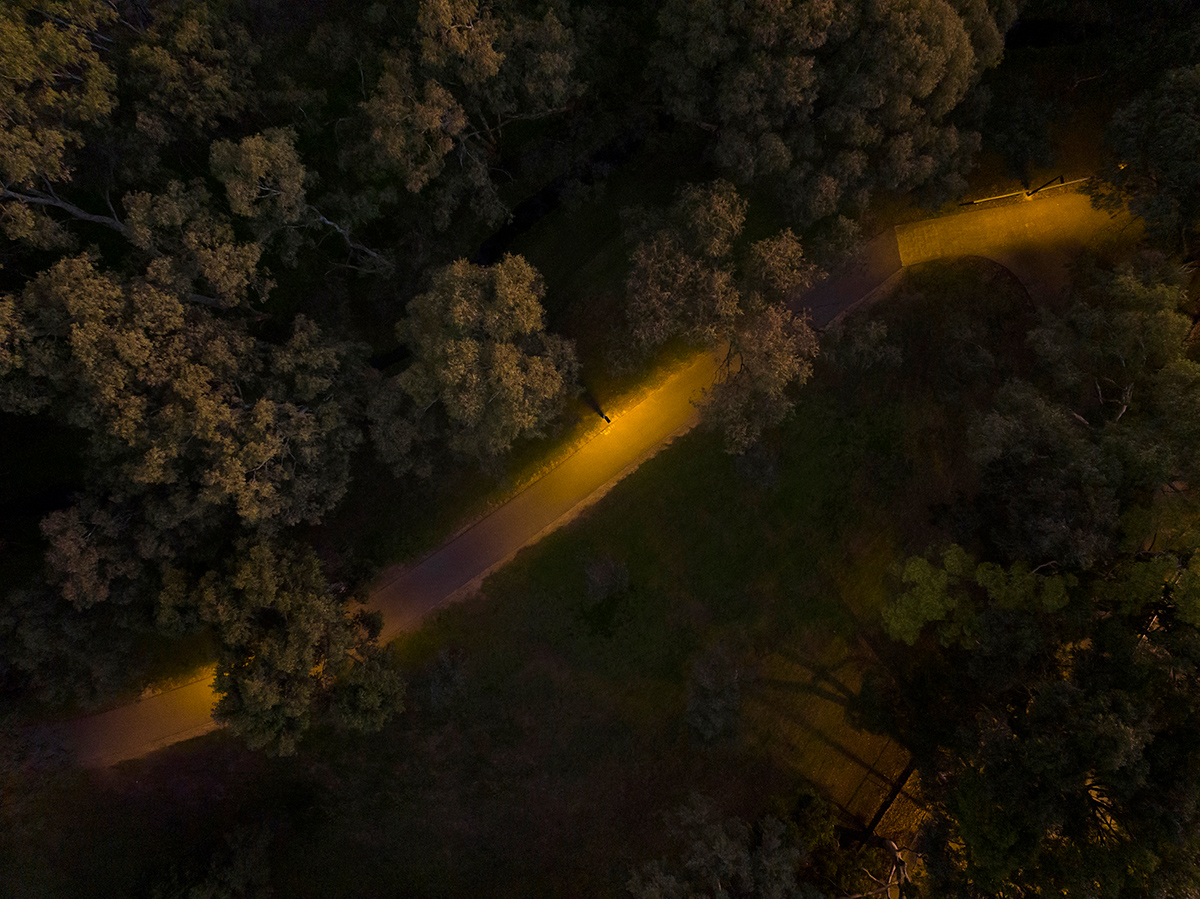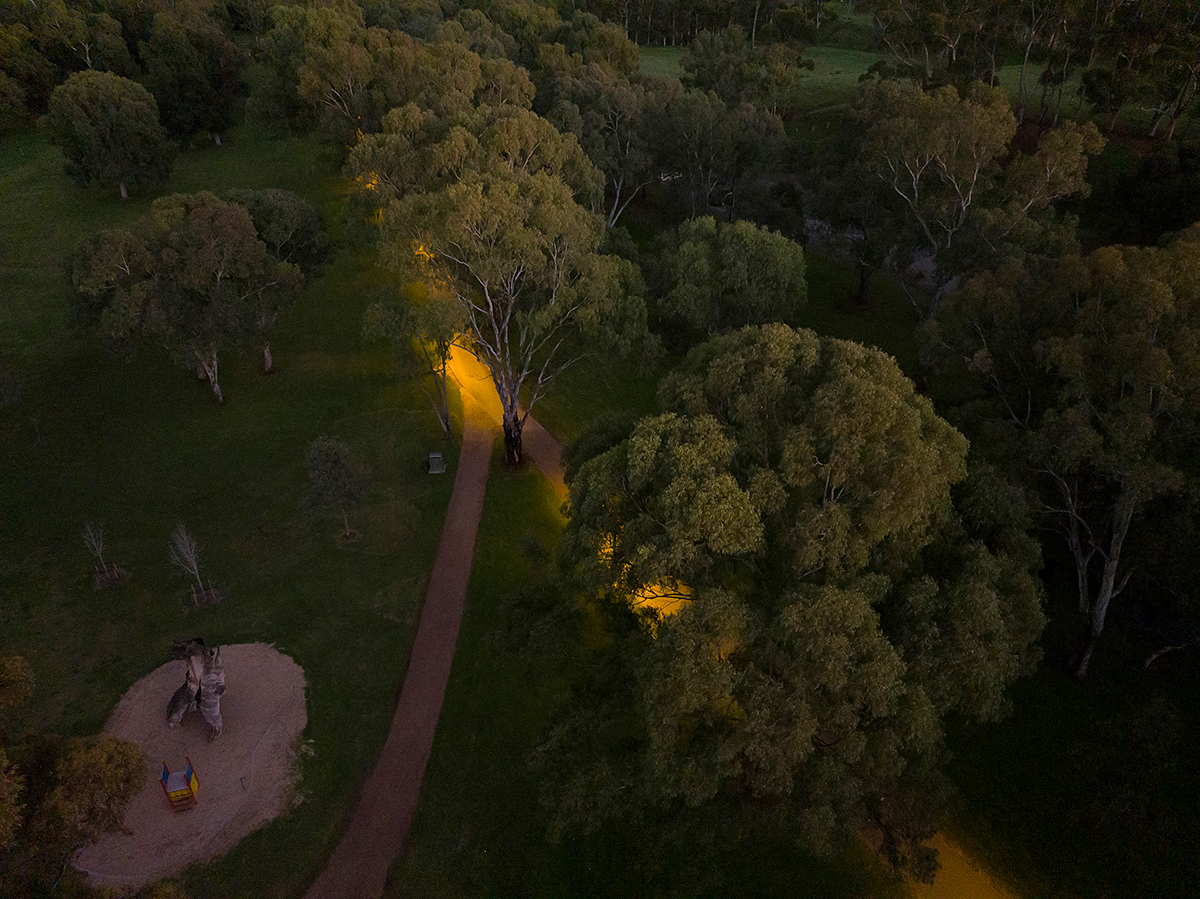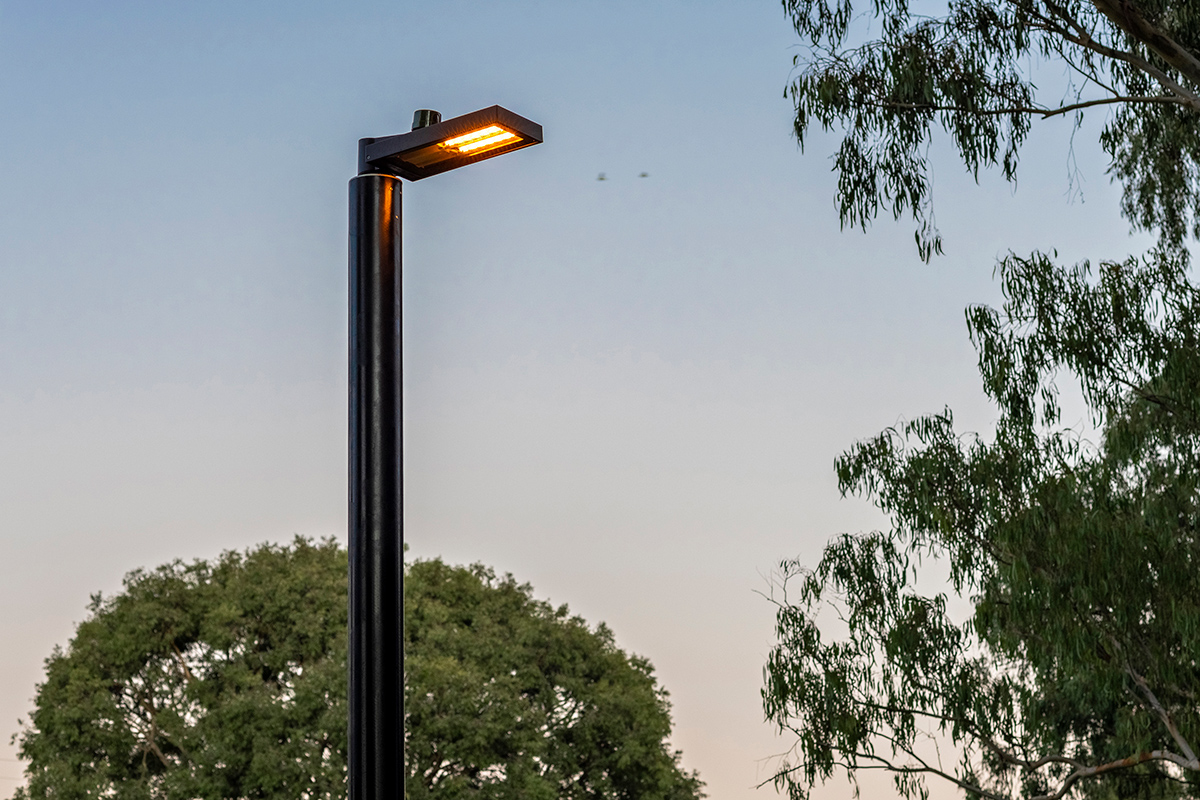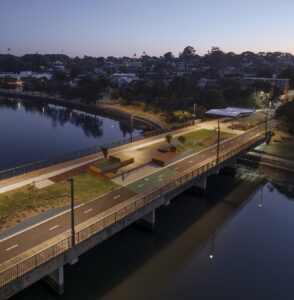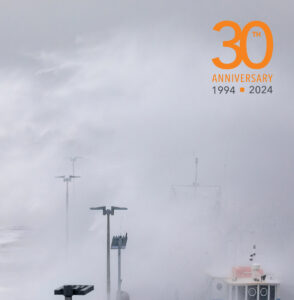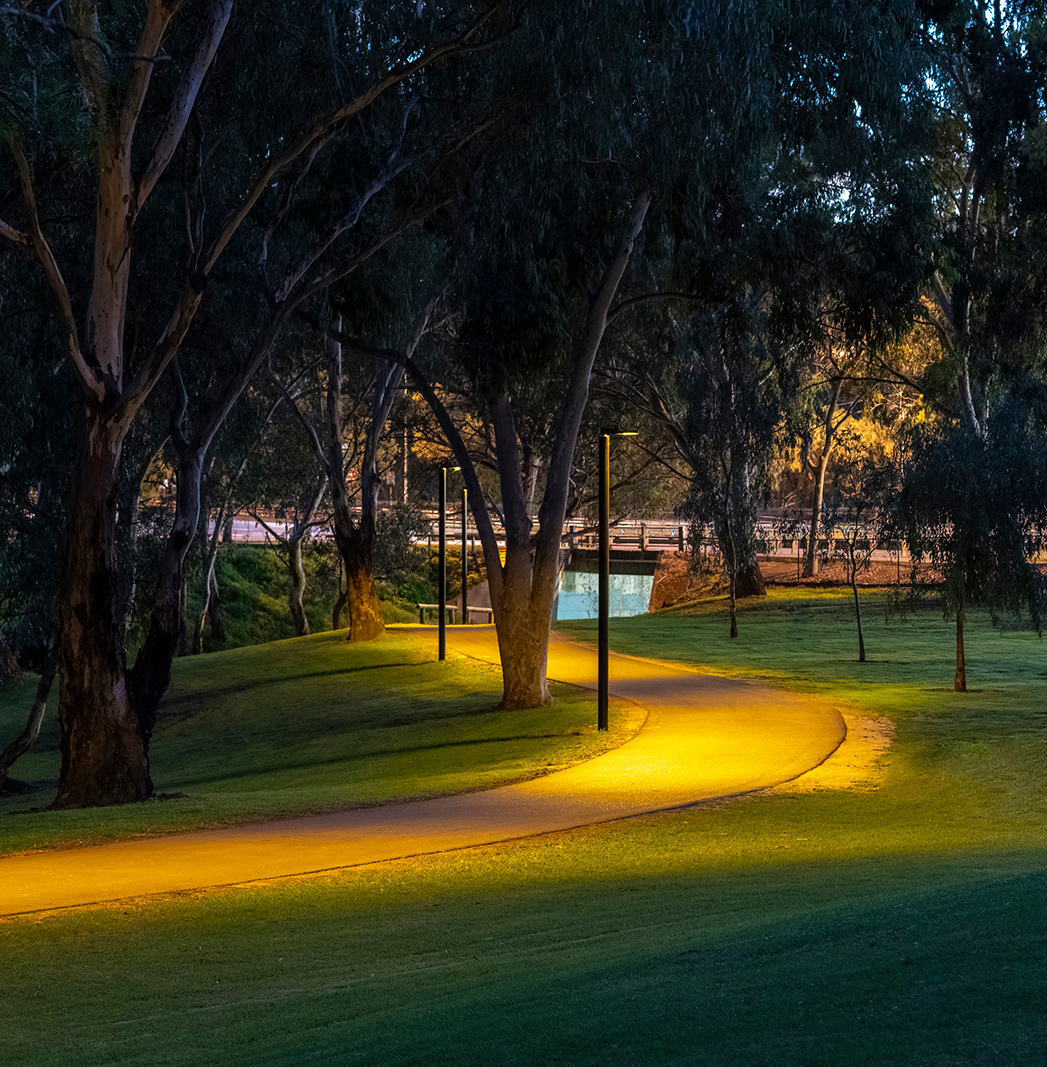
PEDESTRIAN, NIGHT SENSITIVE
The progressive City Of Salisbury introduces environmentally considered lighting to Little Para River Trail
Little Para River Trail, City of Salisbury, South Australia
- Completed2022
- ClientCity of Salisbury
- Sales PartnerBuckford Illumination Group SA
- Photography and VideographyIP Media for WE-EF
Little Para River Trail is home to an abundance of flora and fauna, lush open spaces, picnic areas and playgrounds. This beautiful walking and cycling trail in South Australia is enjoyed by many humans by day, and comes alive with nocturnal activity by night. Running from Jenkins Reserve to Carisbrooke Park, it forms part of the Salisbury City Wide trails.
Until recently, people using the trail, were limited to doing so during daylight hours. With no artificial light to the trail, the potential for people to get their early morning or late night outdoor activities was not being maximised.
Thus, the City of Salisbury engaged Buckford Illumination Group to deliver a wildlife sensitive lighting solution, using WE-EF LIGHTING, that provided wayfinding and amenity to the area, whilst minimising light pollution and disruption to the existing ecosystem.
Considerations
• Mitigating the potential negative impacts of artificial light at night by following best practice lighting principles:
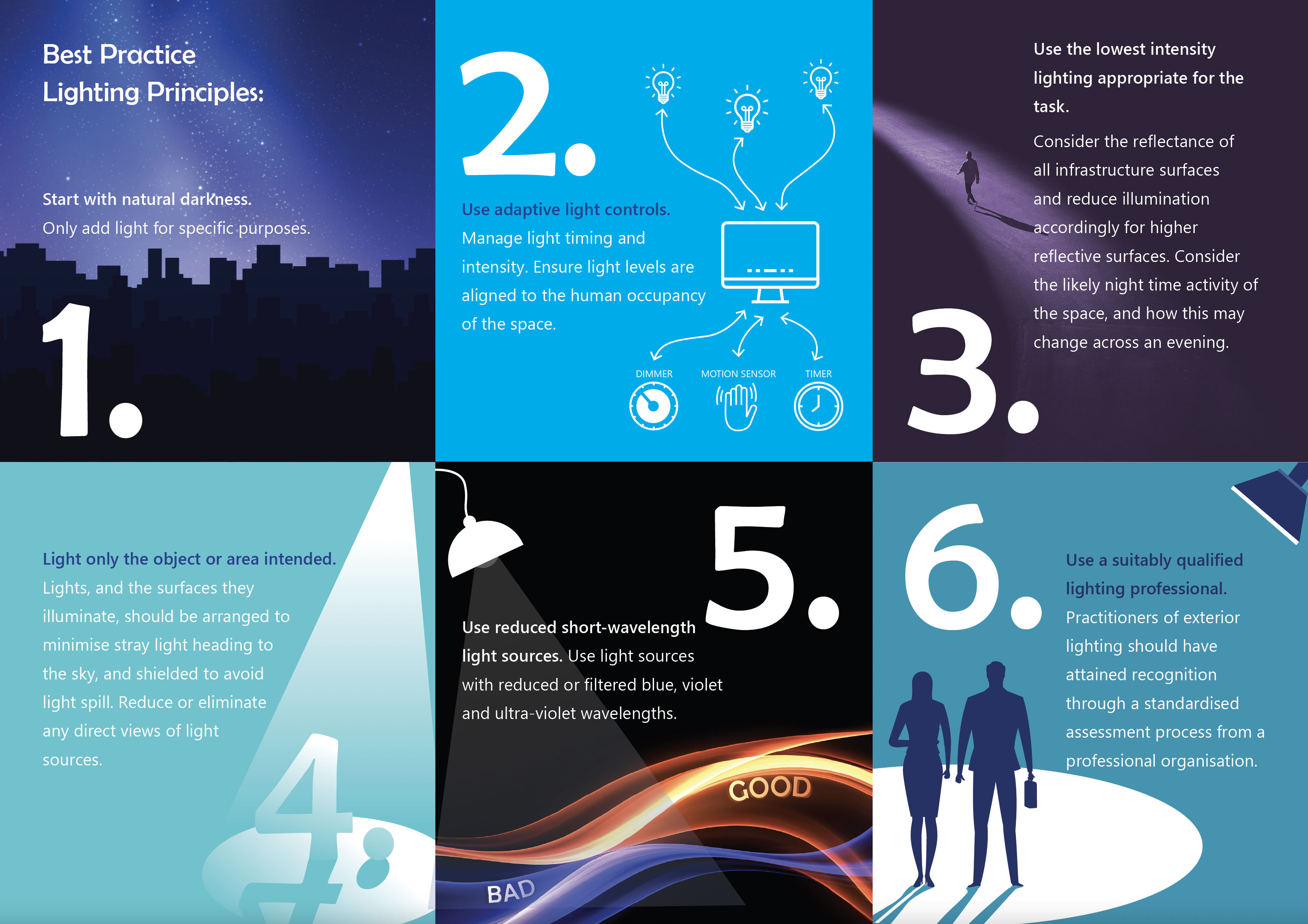
Specifically for this project, the following factors were important:
~ Choice of colour temperature – as warm as possible, minimising blue light content (to protect wildlife that are adversely impacted by blue light)
~ Quality optics – that place light where it is needed for wayfinding and prevent glare
~ No upward light spill
~ Controlled lighting – ensuring lights are only on when needed
~ Luminaire placement – use the minimum number of luminaires needed
• A luminaire build quality consisting of marine grade aluminium to ensure robustness and durability and a coating process that ensures resistance to corrosion
• Strong service support both on installation and for any post commissioning issues, backed by a strong warranty
• Luminaires that are designed to last, needing minimal maintenance and downtime to improve long term cost efficiency and reduce unnecessary outages and labour
• Minimising power consumption and maximising energy efficiency
Project Challenges
Prior to 2021, artificial lighting along the Little Para River Trail did not exist. The City of Salisbury sought to encourage an increased usage of the trail by walkers and cyclists and as such, needed to provide gentle illumination for wayfinding, safety and security.
A progressive and environmentally minded council, the City of Salisbury placed great emphasis on understanding the environmental considerations of introducing artificial light.
According to Michael Pavlovich, Energy & Lighting Coordinator of City of Salisbury, “good design should be a balance of needs for all inhabitants of area, not just for human use.” Thus, with a shared interest and passion for environmental conservation, the critical challenge for Michael Pavlovich and the City of Salisbury and Peter Buckley of Buckford Illumination Group, was to find a solution to strike that balance between the needs of users and the impact on the environment, which demanded careful consideration of colour temperature (minimal blue light) and preventing any upward light spill. The council were also focused on minimising power consumption and carbon footprint and as such needed the solution to be highly energy efficient.
Solution
In balancing these needs, it is important to understand that scientifically, humans and wildlife interpret light differently. Vision is a critical cue for animals to orient themselves in their environment, find food, avoid predation and communicate. Most animals are sensitive to UV/violet/blue light (the cooler the colour temperature, the more blue it contains) and it can change their behaviour and psychology and have an impact on their survivorship or reproductive output.

It can also have the indirect effect of changing the availability of habitat or food resources. It can attract predators and invasive pests, both of which may pose a threat to listed species. For humans, blue light exposure at night can alter biochemical or circadian rhythms.
Peter Buckley of Buckford Illumination Group South Australia introduced WE-EF LIGHTING ‘Night Sensitive Lighting’ technologies and ADSA Approved (Australasian Dark Sky Alliance) range of luminaires. Buckford Illumination Group worked together with WE-EF LIGHTING to recommend VFL520 luminaires with Phosphor Converted (PC) Amber LED chips with DALI/PE (Nema) control, to support the council in achieving their environmental and social goals in effectively illuminating the trail without disrupting the natural environment.
With PC Amber LED Chips, UV/violet/blue light content is ≤2% and the colour temperature is 1850 K, similar to that of sunrise, sunset or a candle flame. While Amber is monochromatic with a peak wavelength of 590 to 595 nm, PC Amber allows far more visible light to get through. Humans as well as most wildlife are sensitive to shorter wavelengths (blue), with it impacting their behaviour, psychology, survivorship and reproductive output.
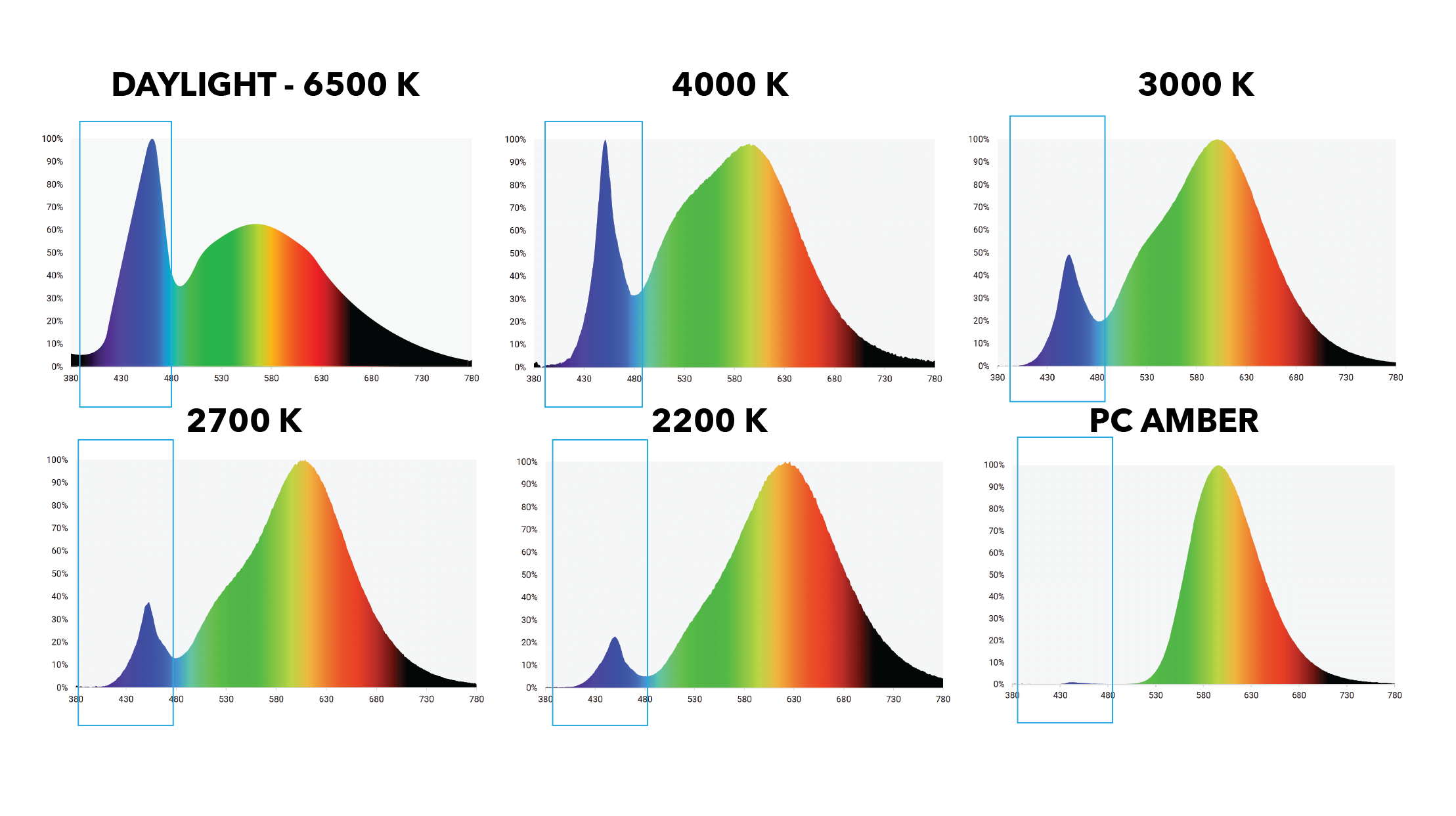
In adopting PC Amber for Little Para Park, the blue light content could be minimised as could the actual number of luminaires needed to provide safe wayfinding, thereby maximising efficiency, without compromising the impact on wildlife that is sensitive to blue light.
The results
The lighting installation along the Little Para River Trail has made the walking track accessible for users at all hours, bringing more people back into the area. According to Peter Buckley of Buckford, “it is noticeable that the path, particularly in the winter months when it is darker earlier, is being used more frequently by joggers, walkers and cyclists,”
The adoption of PC Amber is, so far, being well received by the community and flora and fauna; “PC Amber allows the pupils to be dilated allowing you to see more clearly into the darker, unlit areas, and feeling safer while being wildlife sensitive allowing for our nocturnal non-human residents to enjoy the space as nature intended,” says Michael Pavlovich.
Another advantage of the WE-EF VFL520s used in this installation is the quality optics that direct the PC Amber light precisely to where it is needed with superior control, the [P65] beam gently illuminates the track, providing a warm atmosphere without unnecessary light spill and without any upward light spill. The City of Salisbury and local community are extremely pleased with the installation. Additionally, it has also provided savings for the council compared to previous proposals being considered at the time.
This quote from Michael Pavlovich of the City of Salisbury tells it all; “I was sceptical when it comes to LED lighting, as I wasn’t not sure it delivers a better final result overall, but it is the way we are going for now. Peter Buckley and the team at Buckford have been mindful of my position and have only offered solutions that were beneficial to the community outcome we were seeking. I am so impressed with the way Buckford addressed all my concerns and their consultative process with the design of this, and other areas”.
“PC Amber allows the pupils to be dilated allowing you to see more clearly into the darker, unlit areas, and feeling safer, while being wildlife sensitive allowing for our nocturnal non-human residents to enjoy the space as nature intended”
